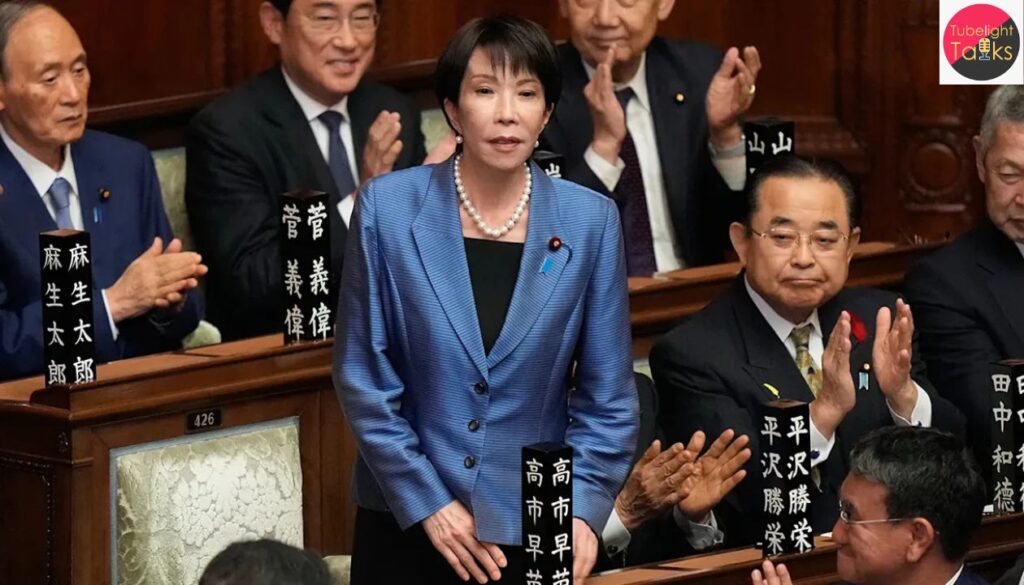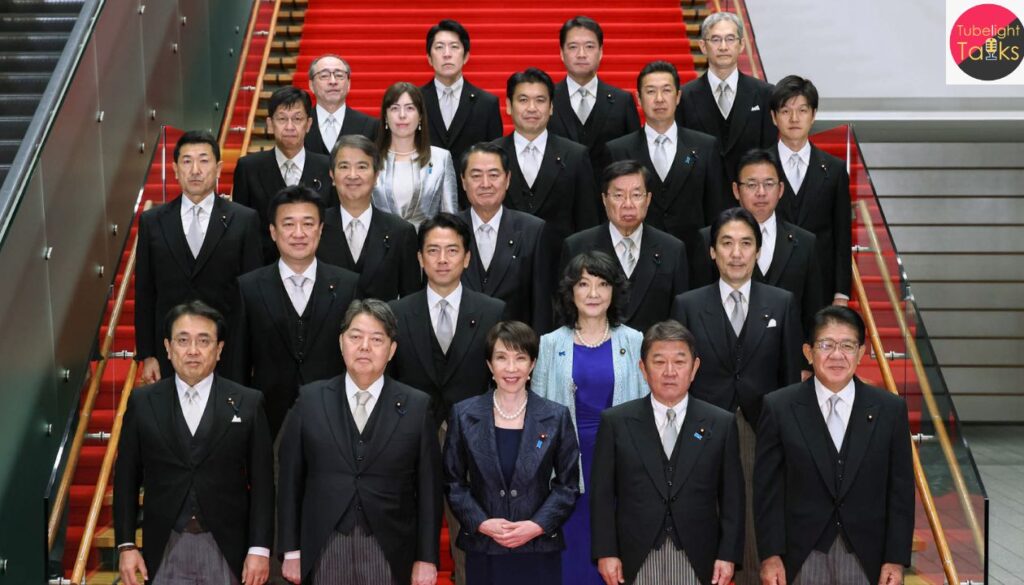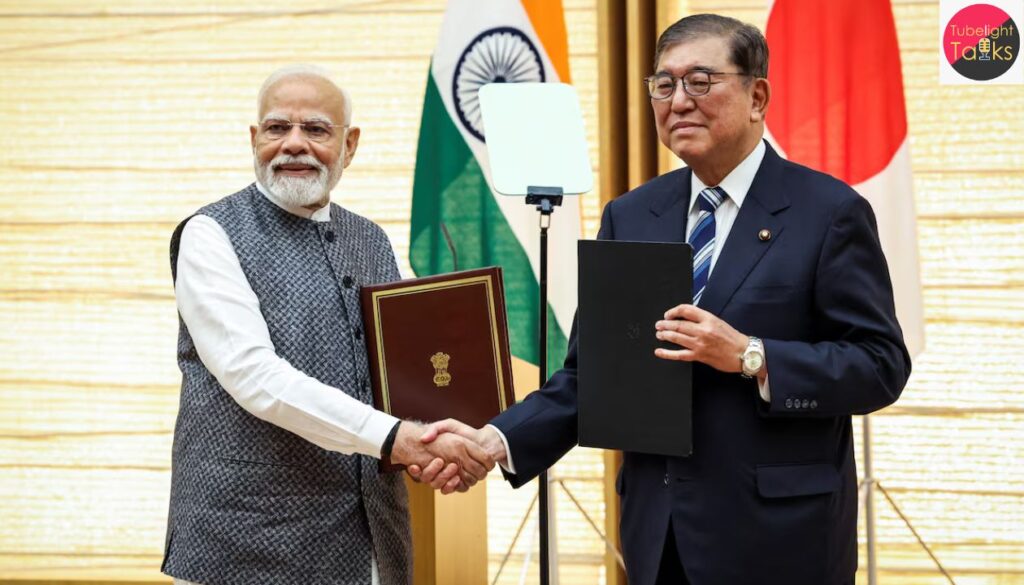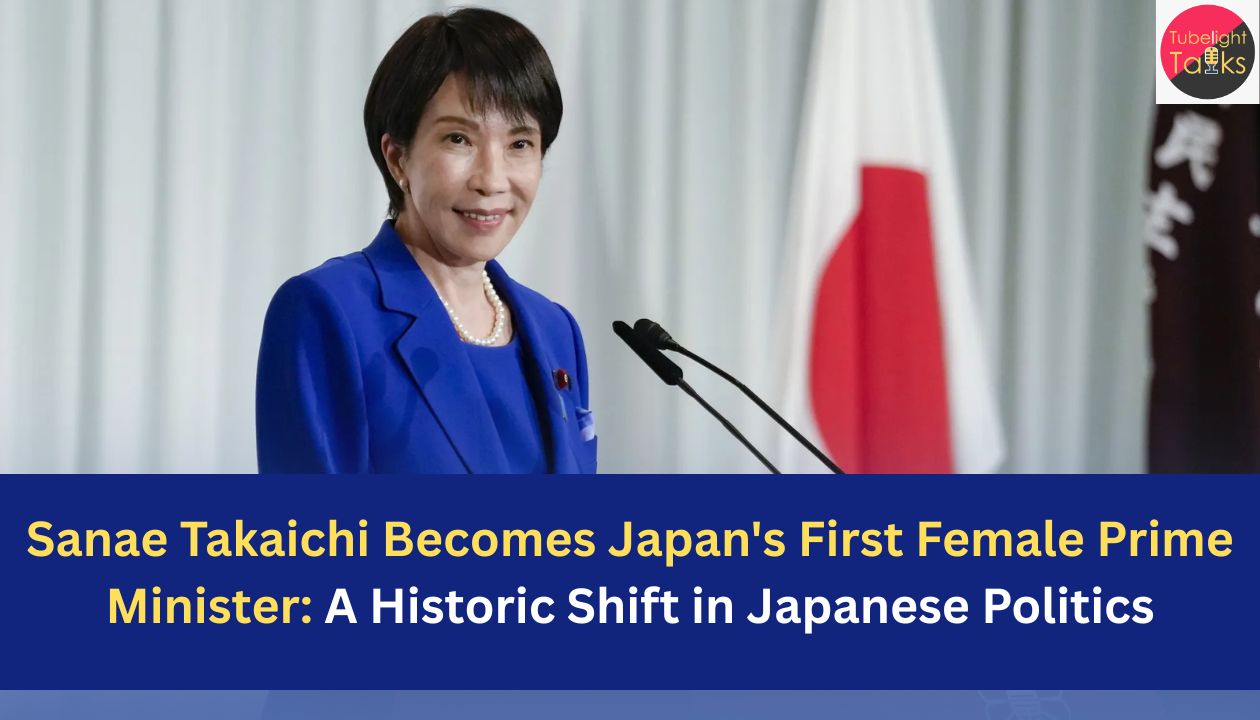Japan’s First Female Prime Minister: Japan has crossed a historic milestone with the election of Sanae Takaichi as its first female Prime Minister. Her appointment marks a turning point in the political landscape of Japan, long dominated by men and traditional power structures. On October 21, 2025, the decision made by Japan’s National Diet (parliament) sparked both celebration and debate — celebration for breaking a 150-year gender barrier, and debate over her conservative ideology and governance style.
A Milestone Moment in Japan’s Democracy
For decades, Japan has lagged behind other advanced democracies in gender representation. Despite being the world’s third-largest economy, the country consistently ranked low on the World Economic Forum’s Global Gender Gap Index, particularly in politics and economic participation.
Therefore, the ascent of Sanae Takaichi to the premiership is more than a personal triumph — it is a symbolic leap for Japanese women who have long been underrepresented in leadership roles. Her victory follows years of advocacy for gender equality, modernization, and calls to reform Japan’s rigid political culture.
From Nara to Nagatacho: The Rise of a Political Veteran
Born in Nara Prefecture in 1961, Sanae Takaichi began her political journey in the early 1990s when she first won a seat in Japan’s House of Representatives. With strong nationalist leanings, she steadily built her reputation as a disciplined and determined lawmaker. Over the years, she has held several high-profile cabinet positions — including Minister of Internal Affairs and Communications, Minister of Economic Security, and Policy Research Council Chairperson within the ruling Liberal Democratic Party (LDP).

Nicknamed “Japan’s Iron Lady,” Takaichi’s firm leadership style and conservative ideology have drawn comparisons to Margaret Thatcher, whom she openly admires. Her mentor was the late Shinzo Abe, Japan’s longest-serving Prime Minister, whose economic vision and national pride she continues to uphold.
Breaking the Old Order: Collapse of LDP–Komeito Alliance
For decades, Japan’s ruling LDP governed in coalition with the Komeito Party, a centrist group supported by a Buddhist organization. However, ideological differences over defense and constitutional reforms led to the alliance’s collapse in mid-2025. To restore party strength and public trust, Takaichi formed a new coalition with the Japan Innovation Party (Nippon Ishin no Kai) — a right-leaning, pro-business group. This alliance secured her majority in the Diet, replacing former Prime Minister Fumio Kishida, who resigned amid declining approval ratings.
Formation of the 104th Cabinet of Japan
After her election, Takaichi announced her Cabinet lineup — officially known as the 104th Cabinet of Japan. Critics noted that only two of her nineteen Cabinet ministers are women, sparking debates about her true commitment to gender equality. Defending her selections, Takaichi stated that “appointments are made based on merit and ability, not gender,” while acknowledging the need for broader female participation in the future. Her “Takaichi Cabinet” has pledged to focus on three key pillars: economic revitalization, defense enhancement, and demographic revival.

Policy Priorities: A Mix of Tradition and Transformation
1. Economic Revival and ‘Neo-Abenomics’
Takaichi’s Neo-Abenomics continues Shinzo Abe’s economic doctrine — combining fiscal stimulus, structural reform, and monetary easing. Her government plans to boost consumer spending, small business growth, infrastructure, technology, and defense manufacturing. Yet, she faces the challenge of managing Japan’s massive public debt, exceeding 250% of GDP — the highest among developed nations. The Tokyo Stock Exchange rose slightly after her election, signaling cautious optimism.
2. Defense and Security Reforms
Known for her hawkish stance, Takaichi advocates strengthening Japan’s Self-Defense Forces (SDF) and revising Article 9 of the Constitution, which renounces war. She supports acquiring advanced technologies such as hypersonic missiles, drones, and cyber defense systems. While aligning Japan more closely with the United States, her assertive stance has drawn criticism from China and South Korea, who view her policies as militaristic.
3. Social and Demographic Challenges
Japan’s shrinking population remains a major concern. Takaichi plans to offer financial incentives for families, improve childcare support, and promote skilled immigration. Her support for traditional family values, however, has faced criticism from younger and progressive voters due to her opposition to same-sex marriage and selective gender laws.
A Symbolic Yet Controversial Figure
While many celebrate Takaichi as a pioneer for women in politics, others caution that her agenda reflects conservatism more than feminism.
Political analyst Haruko Miyazawa commented,
“Takaichi’s rise is undoubtedly historic but also paradoxical — she represents both progress and preservation of tradition.”
Regardless, her victory has inspired a new generation of Japanese women to challenge social barriers and pursue leadership roles.
Foreign Policy: Recalibrating Japan’s Role in the Indo-Pacific

Under the Quad framework, Takaichi aims to strengthen alliances with the U.S., India, and Australia while reducing reliance on China. Her government will prioritize defense cooperation, energy diversification, and trade expansion. Her past visits to the Yasukuni Shrine, however, remain controversial, drawing criticism from China and South Korea. Observers are keen to see whether she continues these symbolic acts as Prime Minister.
Also read: India-EU Relations Strengthen: A New Era of Strategic Cooperation
Global Reactions to Her Appointment
United States: Congratulations Takaichi and reaffirm the U.S.-Japan alliance.
China: Expressed concern over her nationalist stance.
South Korea: Hoped for constructive engagement but warned about historical sensitivities.
European Union: Welcomed her leadership as a “milestone for gender equality.”
Public Opinion: Polls show 55% of Japanese citizens support her, while 35% remain cautious about her conservative policies.
Challenges Ahead
Takaichi must tackle economic stagnation, security tensions, and demographic decline while maintaining party unity. Her leadership will test Japan’s readiness to embrace change while holding onto traditional values.
A Historic Step for Women in Japan
Despite controversies, Sanae Takaichi’s rise is undeniably historic. Her journey from a small-town girl in Nara to Japan’s highest political office symbolizes determination, resilience, and evolution. Whether she will be remembered as Japan’s “Iron Lady” who strengthened national pride or as a polarizing figure dividing public opinion will depend on her leadership in the months ahead. One fact remains certain — Sanae Takaichi has made history.
The Path to True Equality
In light of Japan’s historic milestone with Sanae Takaichi becoming the nation’s first female Prime Minister, the teachings of Sant Rampal Ji Maharaj provide a deeper spiritual perspective on leadership and equality. Sant Rampal Ji Maharaj emphasizes that true progress in society arises not merely from political advancement but from spiritual awakening and adherence to moral values as prescribed in the holy scriptures. Reflecting the essence of divine justice and true governance, His teachings advocate equality of all souls, irrespective of gender, status, or nationality.
In this context, the rise of a woman to Japan’s highest office symbolizes a step toward worldly balance — yet as Sant Rampal Ji Maharaj teaches, real transformation occurs only when leaders and citizens align their actions with true devotion (Satbhakti) under the guidance of the Complete Guru.
Beacon of Renewed Strength
Sanae Takaichi’s premiership stands as a symbol of progress for a nation balancing tradition and transformation. Her leadership will define Japan’s identity in the 21st century — whether as a beacon of renewed strength or as a reminder of the complexities of change. Regardless of the outcome, her name will forever be etched in Japan’s history as the nation’s first female Prime Minister.
FAQs
1. Who is Sanae Takaichi?
Sanae Takaichi is a senior Japanese politician from the Liberal Democratic Party (LDP). She became Japan’s first female Prime Minister in October 2025 after decades of public service.
2. When did she become Japan’s Prime Minister?
She officially took office on October 21, 2025, after being elected by Japan’s parliament, the National Diet.
3. Why is her election considered historic?
Japan has never had a female Prime Minister in its 150-year constitutional history. Her rise marks a symbolic step toward gender equality.
4. What are her key priorities?
Her government focuses on economic revival (Neo-Abenomics), defense reforms, and addressing demographic decline.
5. What challenges does she face?
She faces economic stagnation, regional tensions with China and South Korea, and balancing conservative values with modern expectations.
6. How has the international community reacted?
The U.S. and E.U. welcomed her leadership, while China and South Korea expressed caution due to her nationalist stance.
7. What does her leadership mean for women in Japan?
It’s a major symbolic victory, inspiring women across Japan to pursue leadership roles in politics and beyond.










